43rd Annual WKU Mathematics Symposium Schedule and Abstracts
Schedule Overview
3:00pm
Free registration is available throughout the whole event and begins at 3:00pm. It is located on the 1st floor of Ogden College Hall. There will be free refreshments.
3:30 - 3:45pm
Dr. David Brown, Ogden College of Science of Engineering, Dean
Dr. Kanita DuCloux, Mathematics Department, Chair
3:45 - 4:35pm
Ogden College Hall Auditorium
5:00 - 6:20pm
Sessions will be in Snell Hall. For specific information see below.
6:20 - 7:00pm
Snell Hall
7:00 - 7:50pm
Sessions will be in Snell Hall. For specific information see below.
8:00 - 8:50pm
Snell 1108
Detailed Schedule
Click on the Title and Presenter(s) to read the abstract of the presentation, and see a photo (when available).
Notes: (GA) Gatton Academy High School Student, (U) Undergraduate Student, (G) Graduate Student, (P) Postdoctoral Fellow, (F) Faculty, (I) Industry, * denotes presenter
Each 15-minute talk follows with a 5-minute Q&A. The next presenter should set up the presentation towards the end of the Q&A.
|
Time |
Room |
Title and Presenter(s) |
|
5:00-5:20pm |
SH 1101 |
|
|
SH 1102 |
||
|
SH 3106 |
Applications of the Second Fundamental Theorem of Calculus by Tom Richmond (F) |
|
|
SH 1108 |
||
|
5:30-5:50pm |
SH 1101 |
|
|
SH 1102 |
Acid-Base Titration Simulator MATLAB Application by EB Barrett* (GA) & Mara Neace* (GA) |
|
|
SH 3106 |
Grey Relational Analysis of Air Pollution in Kentucky by Sarah Hartman (G) |
|
|
SH 1108 |
||
|
6:00-6:20pm |
SH 1101 |
A Multivariable Generalization of Euler’s Formula for Sums of Alternating Powers by Brian Nguyen (U) |
|
SH 1102 |
DID NOT PRESENT |
|
|
SH 3106 |
||
|
SH 1108 |
||
|
7:00-7:20pm |
SH 1101 |
Containment Lattices for Interval Posets of Permutations by Asa Ashley* (GA) & Tom Richmond |
|
SH 1102 |
Emergence of Inequality in Fluid-Dynamical Competition by Thomas Hagen (F) |
|
|
SH 3106 |
||
|
SH 1108 |
||
|
7:30-7:50pm |
SH 1101 |
Positive Integers that Measure Knot Complexity by Claus Ernst (F) |
|
SH 1102 |
||
|
SH 3106 |
The Gateway Initiative: Math 109E Assessment from Online to In-class by Lee Emanuel (F) |
|
|
SH 1108 |
Abstracts for Presentations
Title: Mapping and visualizing in R: A journey.
Presenters: Ngoc Nguyen (F)
Affiliation: Western Kentucky University
Abstract: As part of the collaboration work with Dr. Charles Smith and Dr. Patrick Georges, I created maps of the continental U.S. with embedded statistics used in the analysis. In this presentation, I will talk about my journey in creating such maps using R software.
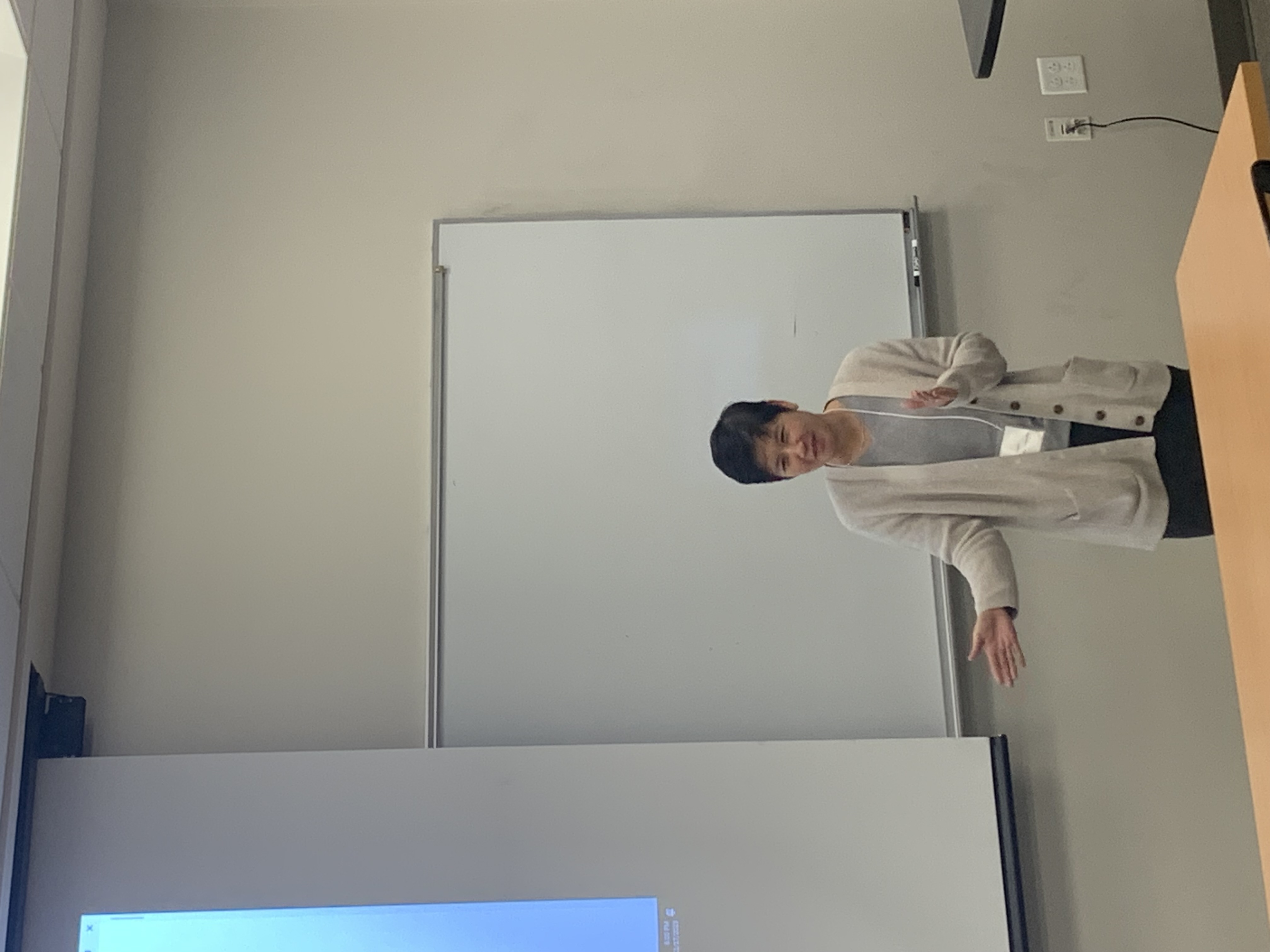
Click here to return to Detailed Schedule
Title: Celestium: Modeling Planetary and Interplanetary Satellites Via Utilization of Ordinary Differential Equations
Presenters: Nikhil Kumar (GA)
Affiliation: Western Kentucky University
Abstract: In 2022, the Satellite Industry Association reported a staggering 45% increase in the number of operational satellites, resulting in an orbital population exceeding 7,000 around Earth. With the growing reliance on satellite technology, the demand for precise and dependable orbit modeling has increased. This project aims to help aid this problem through the creation of Celestium, a sophisticated software solution engineered to compute satellite orbits while accommodating a spectrum of perturbations, including J2 effects, atmospheric drag, etc. Celestium enables users to define satellite orbits through two methods: the basic position (𝑟⃗) and velocity (𝑣⃗) vectors or the Keplerian Orbital Elements (KOEs) set comprising semi-major axis (𝑎), eccentricity (𝑒), inclination (𝑖), true anomaly (θ), argument of periapsis (ω), and the right ascension of the ascending node (Ω). The transformation between the perifocal frame of reference (PQ) and the Earth-Centered Inertial frame (ECI) is accomplished using a translation matrix (𝑅𝑃𝑄→𝐸𝐶𝐼), allowing for a 𝑟⃗ and 𝑣⃗ to be generated from the KOEs (which then is numerically integrated via the Runge-Kutta method). Celestium incorporates perturbations by adjusting a derived acceleration equation. The accuracy of Celestium’s simulations aligns closely with empirical data collected by NASA for satellite trajectories. Additionally, Celestium accommodates various attitude maneuvers, including Hohmann transfers, further enhancing its versatility.
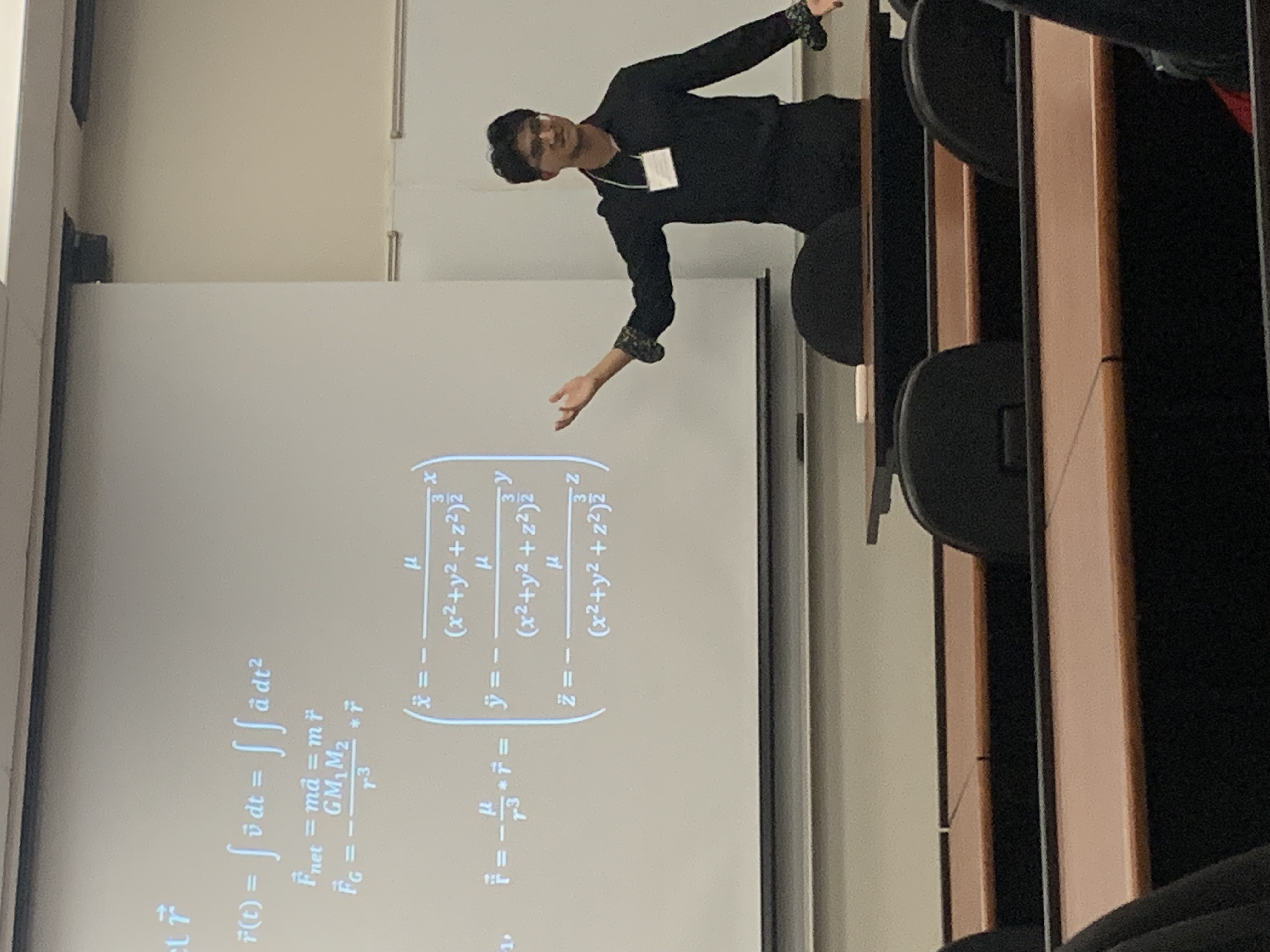
Click here to return to Detailed Schedule
Title: Grey Relational Analysis of Air Pollution in Kentucky
Presenters: Sarah Hartman (G)
Affiliation: Western Kentucky University
Abstract: Air pollution is a crucial factor affecting the environment and public health. With growing communities in Kentucky (KY), it is essential to address these factors as the state has unique economic imports and exports and Air pollution has a significant impact on both morbidity and mortality (Song, Deng, & Ren, 2020). Therefore, monitoring and regulating air quality must mitigate these harmful effects. Various methods are available for assessing air quality and pollution levels, such as regression models, principal component analysis, and factor analysis tools. However, some of these methods present issues in multicollinearity and the nature of collected data. It is essential to recognize that air pollution data is often uncertain, incomplete and contains limited valid data points. Grey relational analysis is a novel tool that can handle this type of data and indicate which factors have the most impact on pollution levels. In this study, grey relational analysis methodology is used to analyze economic and meteorological factors and their relationship with three criteria pollutants: nitrogen dioxide (NO2), sulfur dioxide (SO2), and ozone (O3) pollutant data. Data was collected from three counties in the state during the summer months of 2016-2019. Results indicate that among weather variables, precipitation has had the most impact on NO2 and SO2 levels at all three sites, and Relative Humidity had the most impact on O3 levels. Among economic levels, the most impactful variables differed by site. This is an expected outcome because of the unique economic climate of each location. These results have implications for how Kentuckians impact our environment and provide a glimpse into the diverse workings of air pollution in our state. Future workings on this project include using linear canonical analysis and dynamic grey relational analysis to dive deeper into this critical problem.
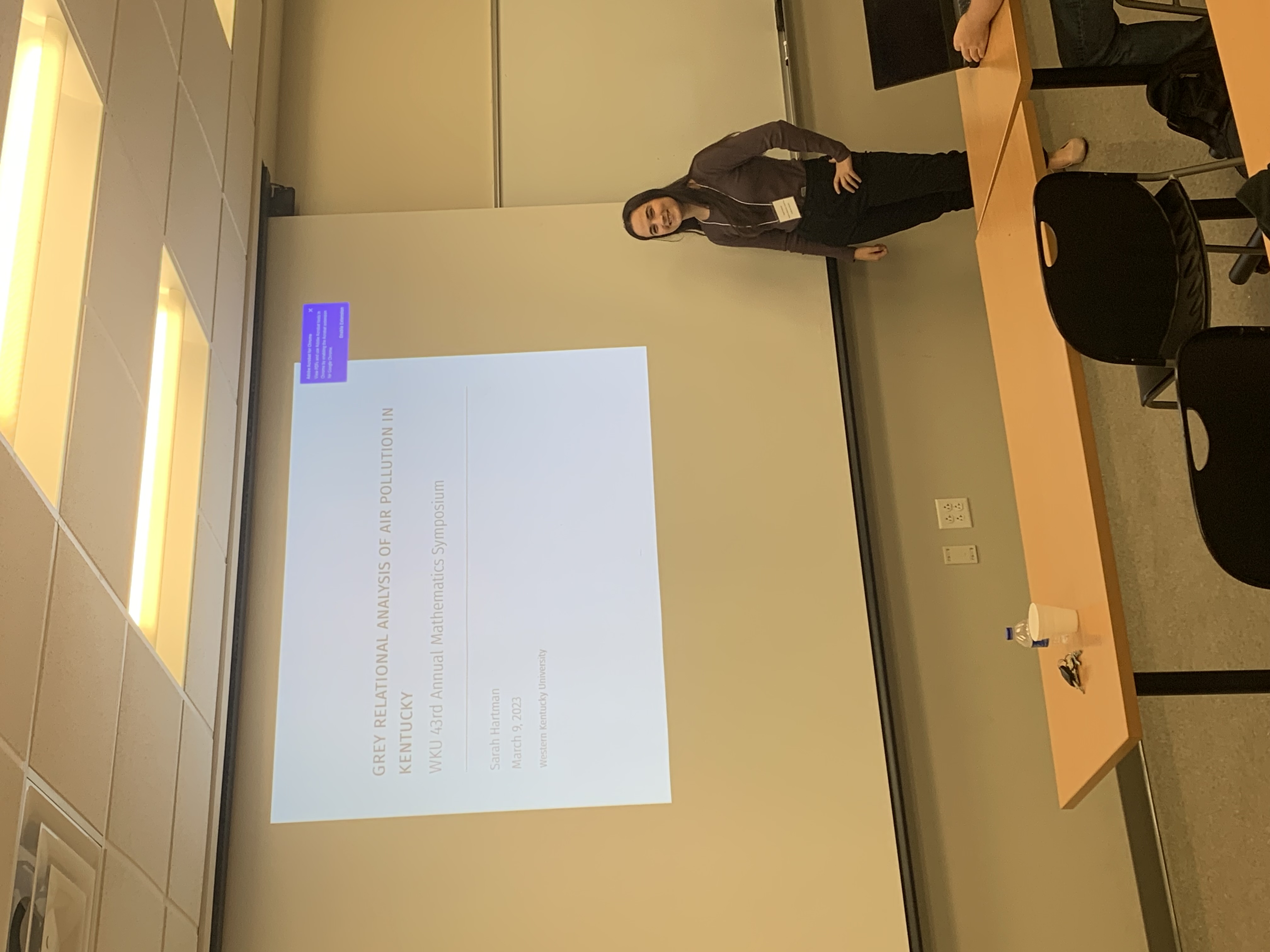
Click here to return to Detailed Schedule
Title: Investigating the Lesson Planning Practices of Undergraduate Mathematics Instructors
Presenters: Sarah Hartman* (G), Nick Fortune (F), George Kuster (F)
Affiliation: Western Kentucky University, Christopher Newport University
Abstract: We surveyed university mathematics instructors across the United States about their planning practices. We sought to better understand the complexities involved in the work that goes into preparing for instruction at the university level. Research indicates that the quality of instructors’ lesson plans can be linked to the quality of their instruction (Akyuz et al., 2012). Instructors self-reported as either using inquiry-based practices, lecture-based practices, or an even mix of both. Instructors that indicated using both inquiry-based and lecture-based practices spend more time lesson planning, but often feel less supported by the lesson plans they create. These instructors attempt to do practices that both the inquiry-based instructors do (i.e., spend time preparing for and accounting for student thinking) and lecture-based instructors do (i.e., ensuring a clear understanding of the mathematics for themselves). We discuss implications for instructors and the undergraduate mathematics education community.
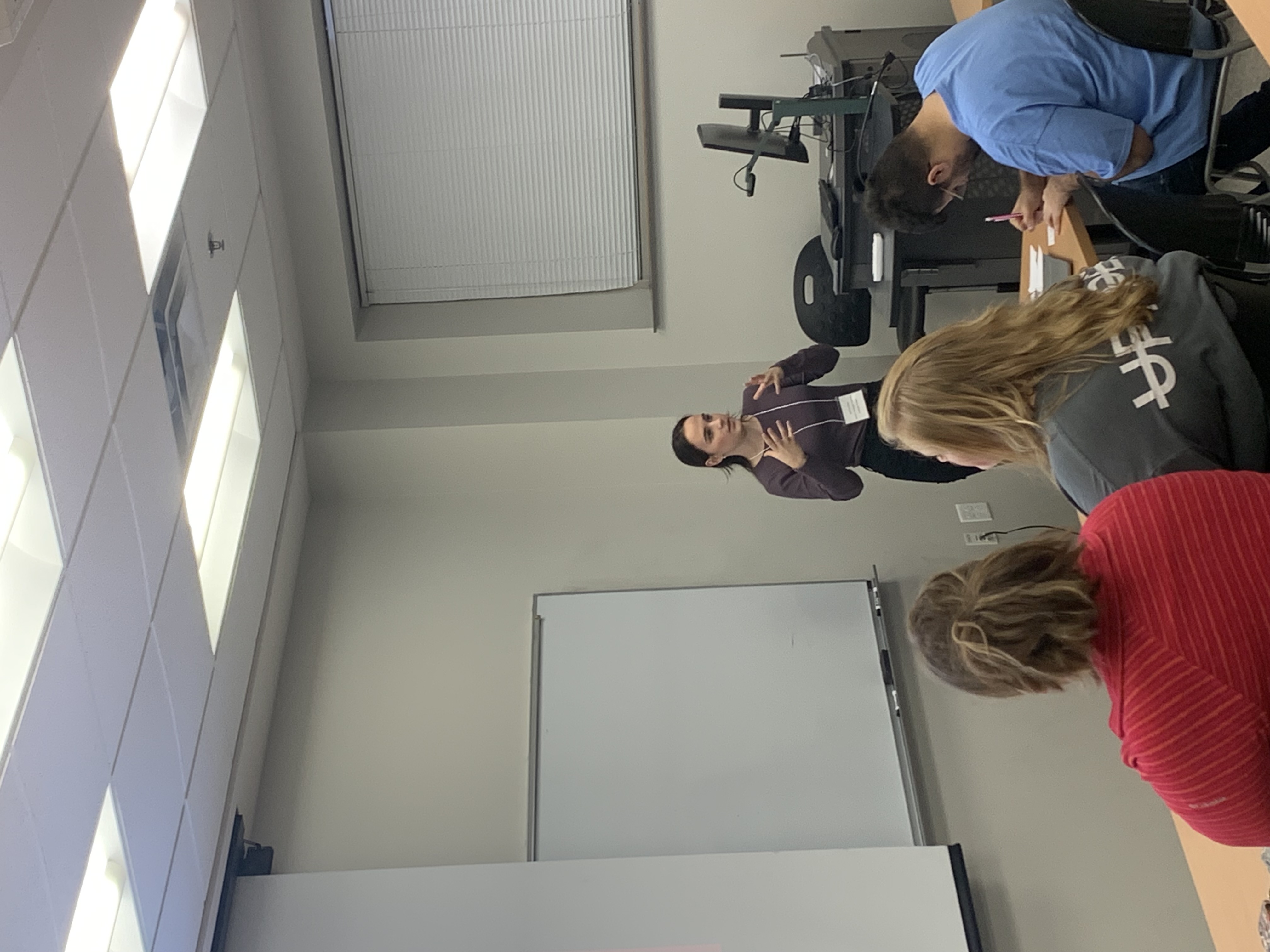
Click here to return to Detailed Schedule
Title: Peaks and descents of permutations and values of Dirichlet series
Presenters: Dominic Lanphier* (F), Allen Lim (U)
Affiliation: Western Kentucky University, Massachusetts Instute of Technology
Abstract: One can illustrate a permutation of N symbols in a particular way, and from this picture one can define peaks and descents of permutations. It has been of considerable interest to study how many permutations there are with a prescribed number of peaks or descents. We will give applications of values of Dirichlet and Dirichlet-type series to this combinatorial topic.
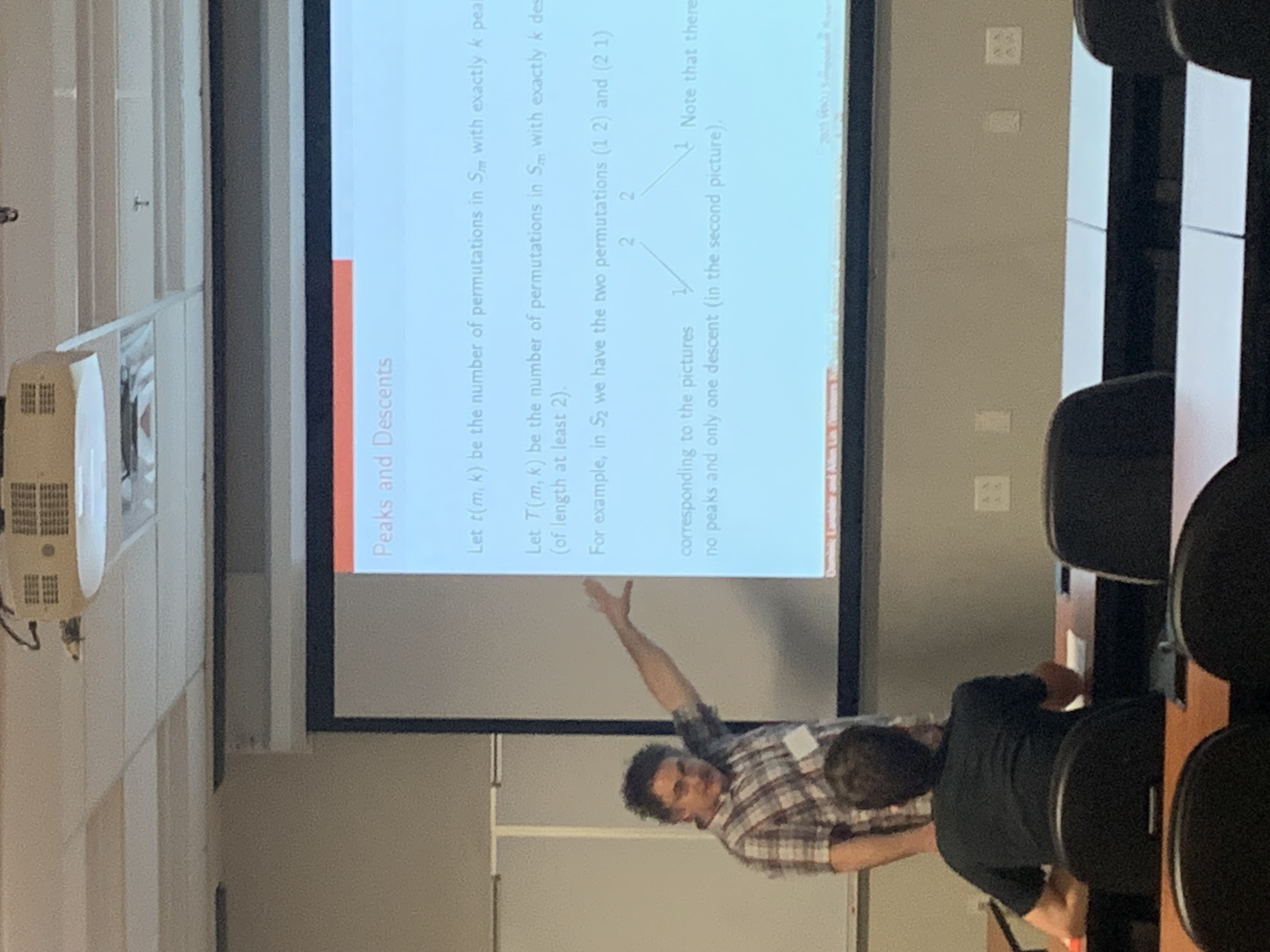
Click here to return to Detailed Schedule
Title: Parameter Estimation for Stroke Patients Using Brain Computed Tomography Perfusion Imaging with Deep Temporal Convolution Neural Network Application
Presenters: Shake Ibna Abir* (G), Richard Schugart (F)
Affiliation: Western Kentucky University
Abstract: Acute ischemic stroke, originating from cerebral artery blockage, often culminates in long-term disability or death. Identifying abnormal, or at-risk tissue inpatients typically involves employing Computed Tomography Perfusion (CTP)imaging in patient-specific assessments. Perfusion images help identify areas of abnormality, including irreversibly-damaged tissue and tissue at risk, for acute brain stroke patients. In the context, certain CTP imaging parameters are used in clinical practice. The most significant physiologic and pathophysiologic estimated perfusion parameters are Cerebral Blood Volume (CBV), Cerebral BloodFlow (CBF), Time to Peak (TTP) and Mean Transit Time (MTT). By integrating computational methodologies with a CTP image dataset, it becomes feasible to delineate critical biological parameters. The recent advancements inmedical imaging have been propelled by the breakthroughs in Deep Learning(DL), particularly through the advent of Temporal Convolution Neural Net-works (TCNN). TCNN, adept at handling time-variant data like CTP imaging data, outperforms conventional Convolution Neural Networks (CNNs) and Re-current Neural Networks (RNNs) by more effectively capturing long-term time dependencies within the CTP data. This study explores the calculated perfu-sion parameters from Time Attenuation Curve (TAC) for patients with strokes from open-source CTP dataset.Keywords:Acute Ischemic Stroke, Computed Tomography Perfusion Imaging, Deep Learning; Temporal Convolution Neural Network.
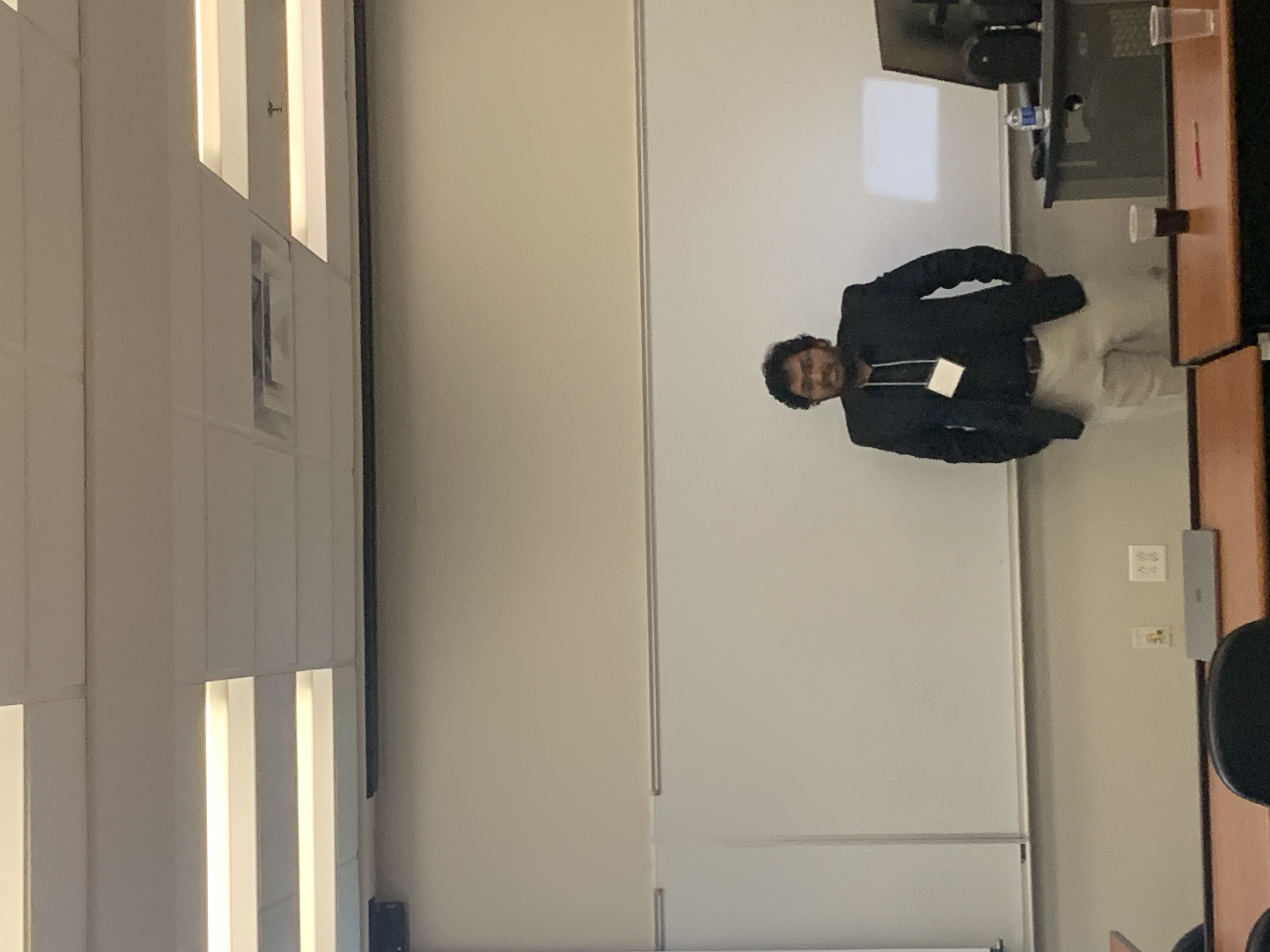
Click here to return to Detailed Schedule
Title: Emergence of Inequality in Fluid-Dynamical Competition
Presenters: Thomas Hagen (F)
Affiliation: The University of Memphis
Abstract: In this talk, I will present recent results about a fluid-dynamical model of competing fluid droplets. When the fluid droplets share a common reservoir, they interact with each other due to imbalances of the surface-tension induced Laplace pressure acting on each individual droplet. These imbalances lead to a reduction of fluid volume in some droplets and an expansion in others. The nonlinear dynamics will be demonstrated and explained by animations and analysis, highlighting some uncanny similarities of microfluidic behavior and socioeconomic competition.
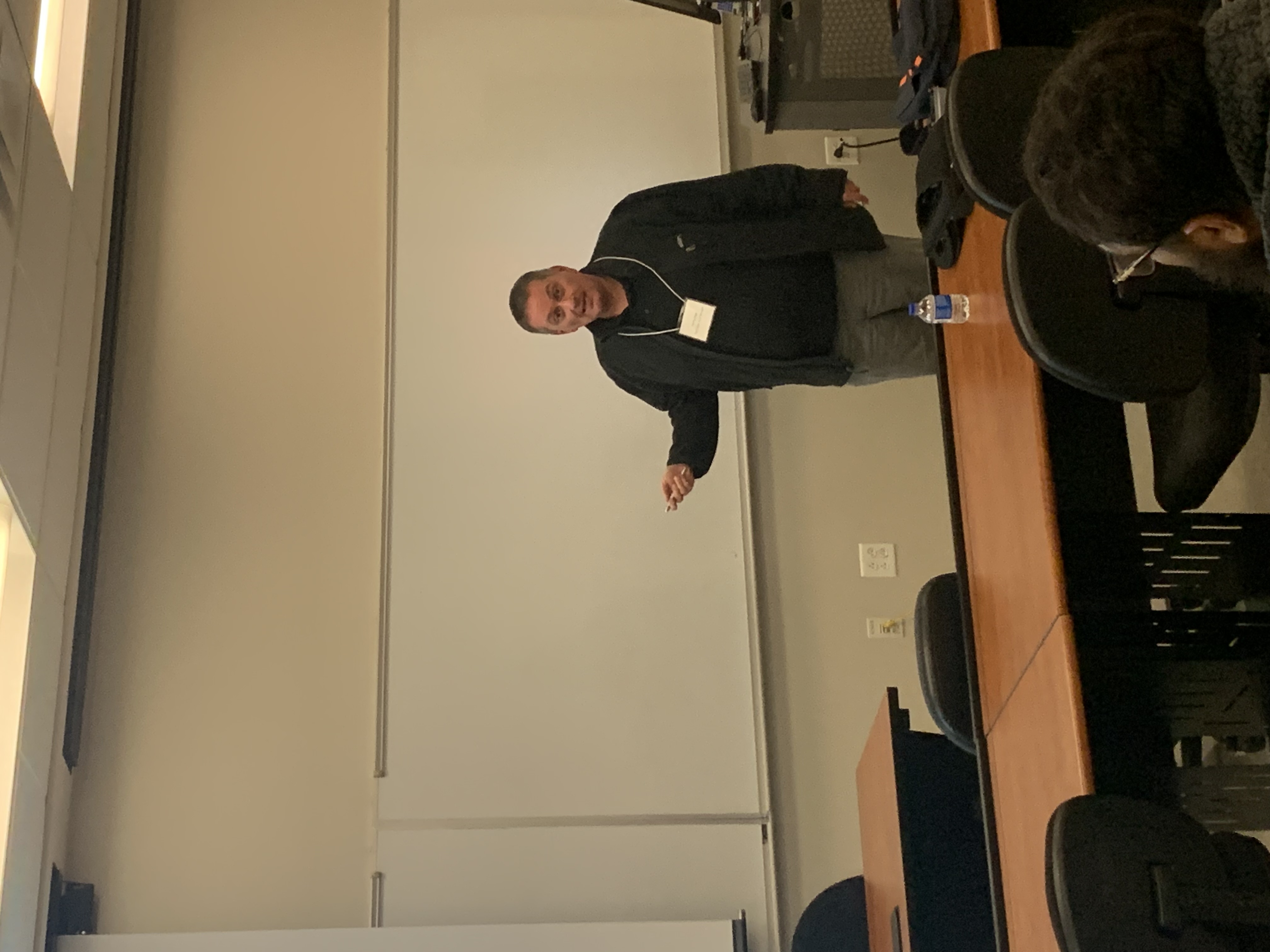
Click here to return to Detailed Schedule
Title: Acid-Base Titration Simulator MATLAB Application
Presenters: EB Barrett* (GA), Mara Neace* (GA)
Affiliation: Western Kentucky University
Abstract: An acid-base titration is a chemistry technique to gain information about a substance. During a titration reaction, a titrant (substance with a known concentration) from a buret is added to a flask to neutralize the analyte (substance of interest). An indicator can be added to the flask, changing color as the solution’s pH changes. The titration is complete once all the analyte in the flask has reacted. Instead of performing this meticulous process in a lab, digital titration simulators can be a more efficient and accurate tool to help learners understand titrations. However, existing online simulators have limited acid-base combinations, are inaccessible for widespread use, and are not user-friendly. To address these problems, we created an acid-base titration simulator application using MATLAB App Designer. The app allows users to customize their input, offering numerous acid, base, and indicator combinations with varying units and amounts. After the user makes their selections and inputs their initial data, they can start the animation, displaying a titration curve that updates as the reaction occurs. The app also contains an animated flask and buret model that shows the indicator’s general color change throughout the titration. Finally, the app provides a trial feature that allows users to store their experiment data at any time of the reaction. Stored data includes the selected acid and base, initial pH, end pH, equivalence point(s), and the amount of titrant added in milliliters. The app can display up to five trials that are removable. Our project aims to make titration simulators helpful, accessible, and customizable for students, researchers, and other users.
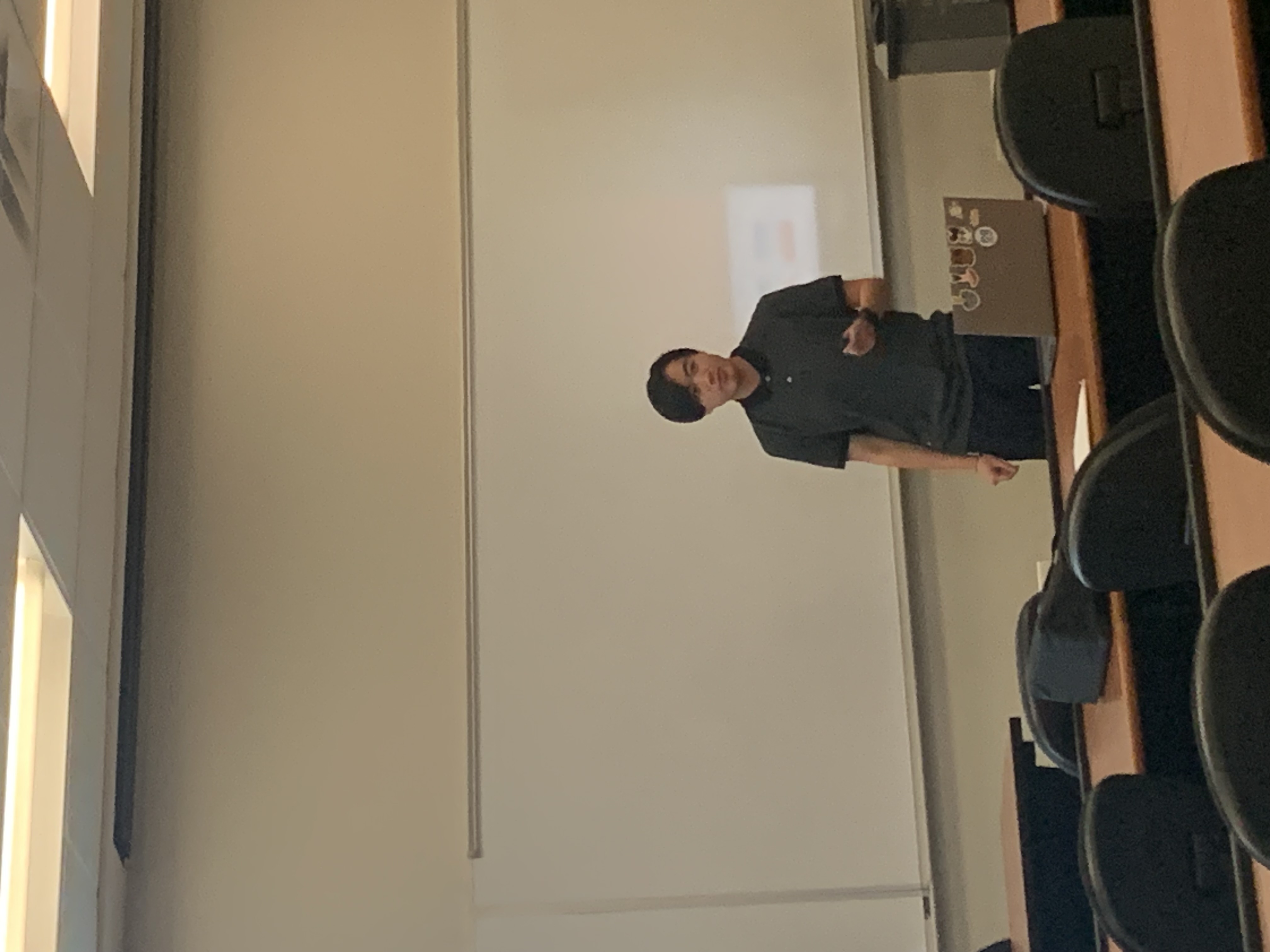
Click here to return to Detailed Schedule
Title: Applications of the Second Fundamental Theorem of Calculus
Presenters: Tom Richmond (F)
Affiliation: Western Kentucky University
Abstract: Let h be a fixed positive number. Every slice of a sphere which is h units thick has the same surface area. The area between a parabola y = p(x) and a line intersecting it at x = a and x = a+h is always the same, independent of a. Archimedes knew these surprising facts. Are the sphere and parabola the only objects satisfying these respective properties? The second fundamental theorem of calculus provides an answer.
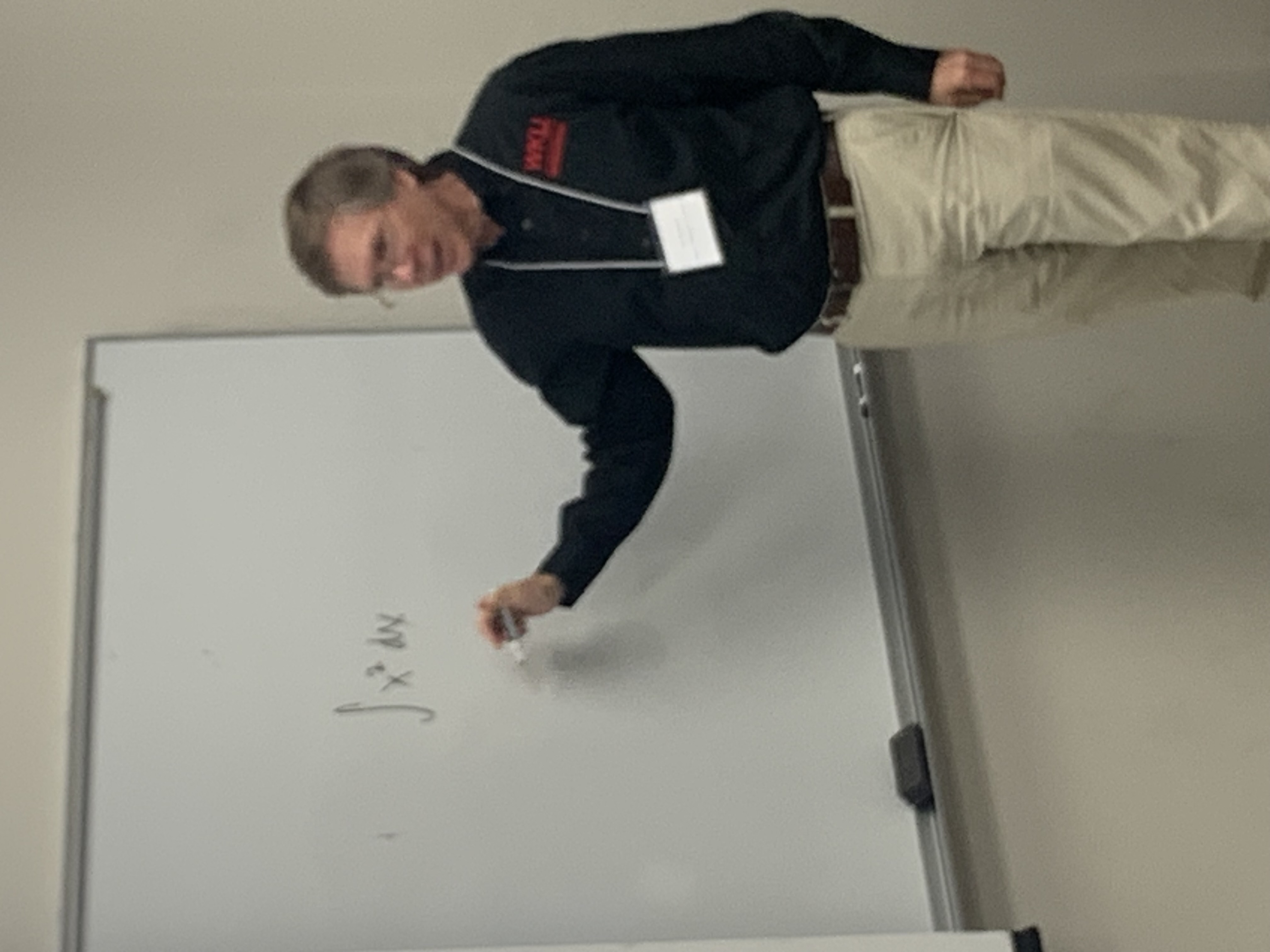
Click here to return to Detailed Schedule
Title: A Multivariable Generalization of Euler’s Formula for Sums of Alternating Powers
Presenters: Brian Nguyen (U)
Affiliation: Western Kentucky University
Abstract: We give a multivariable generalization of a class of zeta functions and their corresponding integral formulation. Furthermore, we establish a relation between analogs to Euler Polynomials and these zeta functions to find efficient polynomial formulas to find alternating Faulhaber-type formulas.
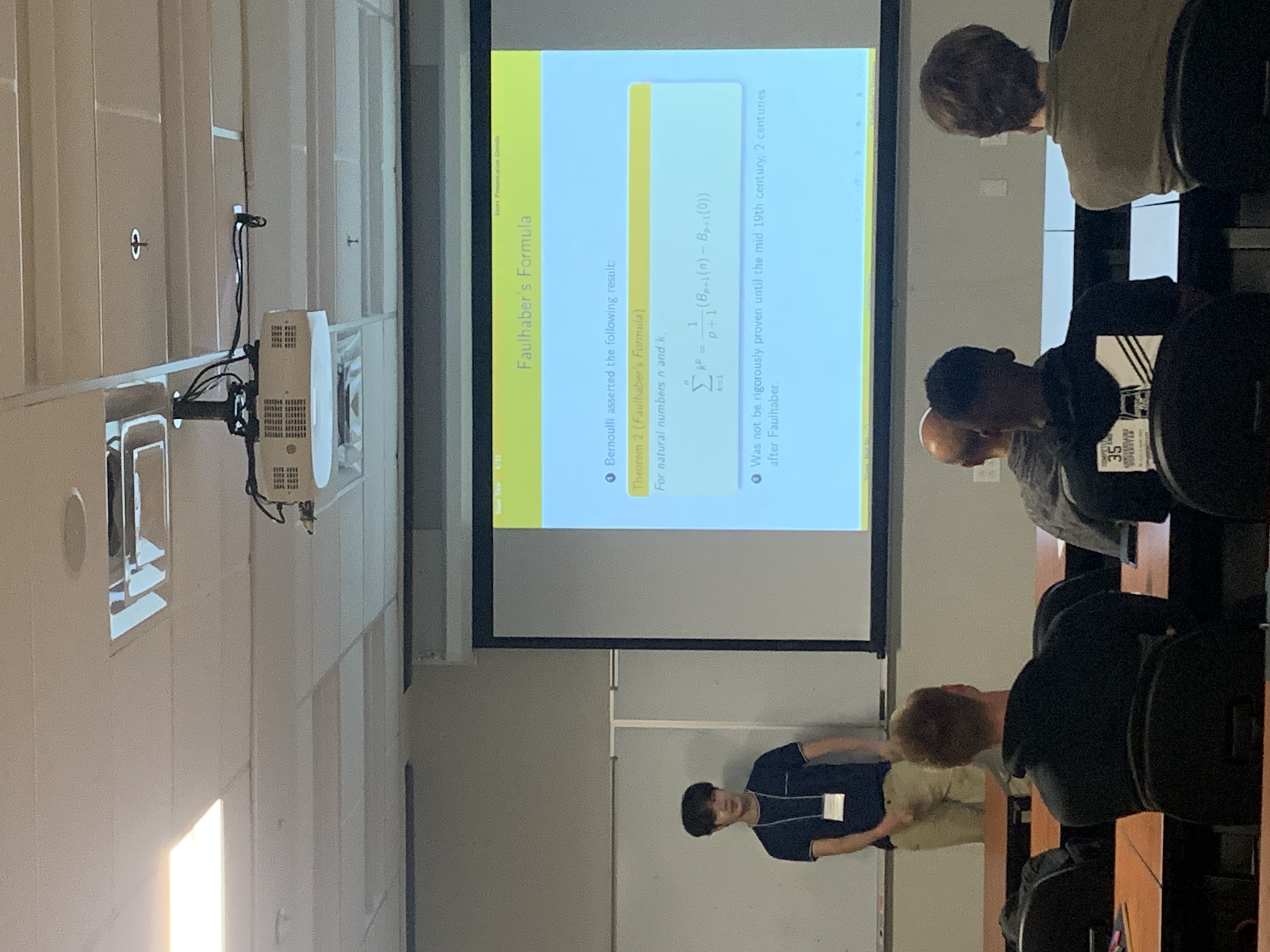
Click here to return to Detailed Schedule
Title: Investigation of Uniform Observability for a Novel Finite Difference Semi-discretization of a clamped Euler-Bernoulli Beam
Presenters: Zulfiqur Haider* (G), Ahmet Ozkan Ozer (F)
Affiliation: Western Kentucky University
Abstract: In this project, a novel space-discretized Finite Difference model reduction is proposed. The new discretization uses the midpoints in the meshes and average operators. With this new discretization technique, the counterpart of the uniform observability inequality, as the discretization parameter tends to zero, is achieved by a Lyapunov-based approach, the discrete multipliers, and an innocent spectral estimate. Compared to the existing literature, the proposed approach and the preliminary results avoid (i) the addition of the artificial numerical viscosity term, (ii) the direct Fourier Filtering approach, both of which have optimality issues, (iii) the defected minimal observation time due to the use of the discrete multipliers. The proposed novel approach mimics the methodology of the proof of exact controllability for the PDE counterpart with an extra observation. There are still open problems, and more im- portantly, some new results need to be refined. Several issues together with ongoing work will be shared with the audience.
![]()
Click here to return to Detailed Schedule
Title: Positive Integers that Measure Knot Complexity
Presenters: Claus Ernst (F)
Affiliation: Western Kentucky University
Abstract: A mathematical knot is the embedding of a circle (or simple closed curve) in 3-space. There exist many integer-valued functions that can be used to describe knot complexity, such as crossing number, bridge number, braid index, unknotting number, nullification number, spiral number. We will describe them with examples using pictures.
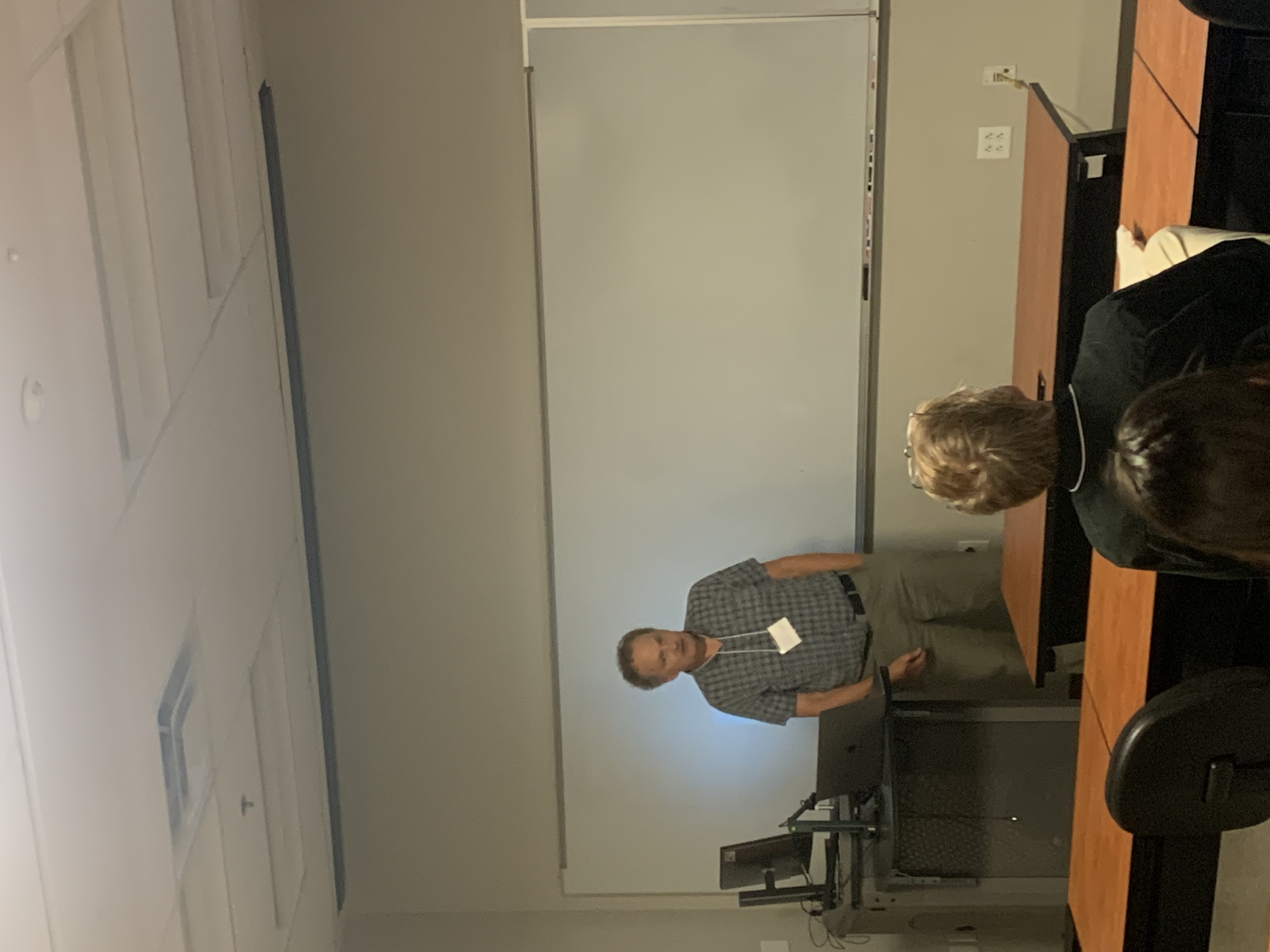
Click here to return to Detailed Schedule
Title: Boundary Output Feedback Stabilization for a Magnetizable Piezoelectric Beam Model
Presenters: Uthman Rasaq* (G), Ahmet Ozkan Ozer (F)
Affiliation: Western Kentucky University
Abstract: Consider a beam of magnetizable piezoelectric material, clamped on one side and free to oscillate on the other, with the addition of two sensors, one measuring the tip velocity and another one the tip current. The beam is of length L. With the small displacements assumption due to the linear elasticity theory, transverse oscillations of the beam are relatively negligible in comparison to the longitudinal vibrations in the form of expansion and compression of the center line of the beam.
However, the collocated controller design is not always feasible since the performance of con- trollers may not be good enough, and moreover, a small increment of feedback controller gains can easily make the closed-loop system unstable. Therefore, a non-collocated controller and observer design is adopted for the first time for this model. In particular, two state feedback controllers are designed at the right end to recover the states so that the boundary output feedback controllers can be designed as a replacement of the states with the estimate from the observers on the left end. By a carefully constructed Lyapunov function, it is proved that both the observer and the observer error dynamics have uniformly exponential stable solutions. This framework offers a substantial foundation for the model reductions by Finite Differences.
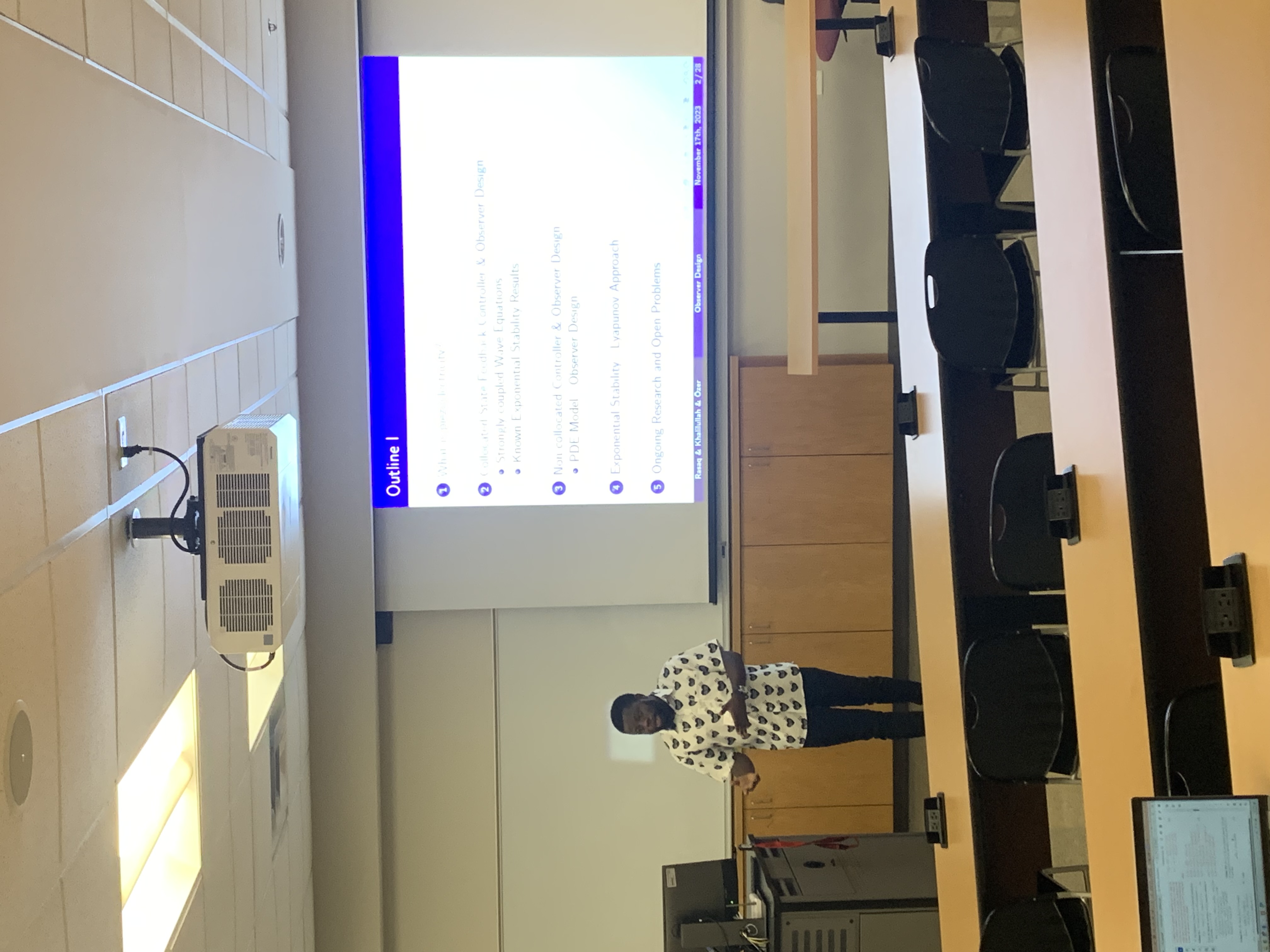
Click here to return to Detailed Schedule
Title: The Exponential Stabilization of a Heat andMagnetizable Piezoelectric Beam Interaction with Static or Hybrid Feedback Controllers
Presenters: Ibrahim Khalilullah* (G), Ahmet Ozkan Ozer (F)
Affiliation: Western Kentucky University
Abstract: It is known that the heat and beam interactions in the open-loop setting does not yield exponentially stability with the thermal effects only. Therefore, two types of boundary-type state feedback controllers are proposed. Both feedback controllers are chosen static. The electrical controller of the piezoelectric beam is chosen dynamic to accelerate the system dynamics. The PDE system for each case is shown to have exponentially stable solutions by cleverly-constructed Lyapunov functions with various multipliers. The proposed proof technique is in line with proving the exponential stability of Finite-Difference-based robust model reductions as the discretization parameter tends to zero.
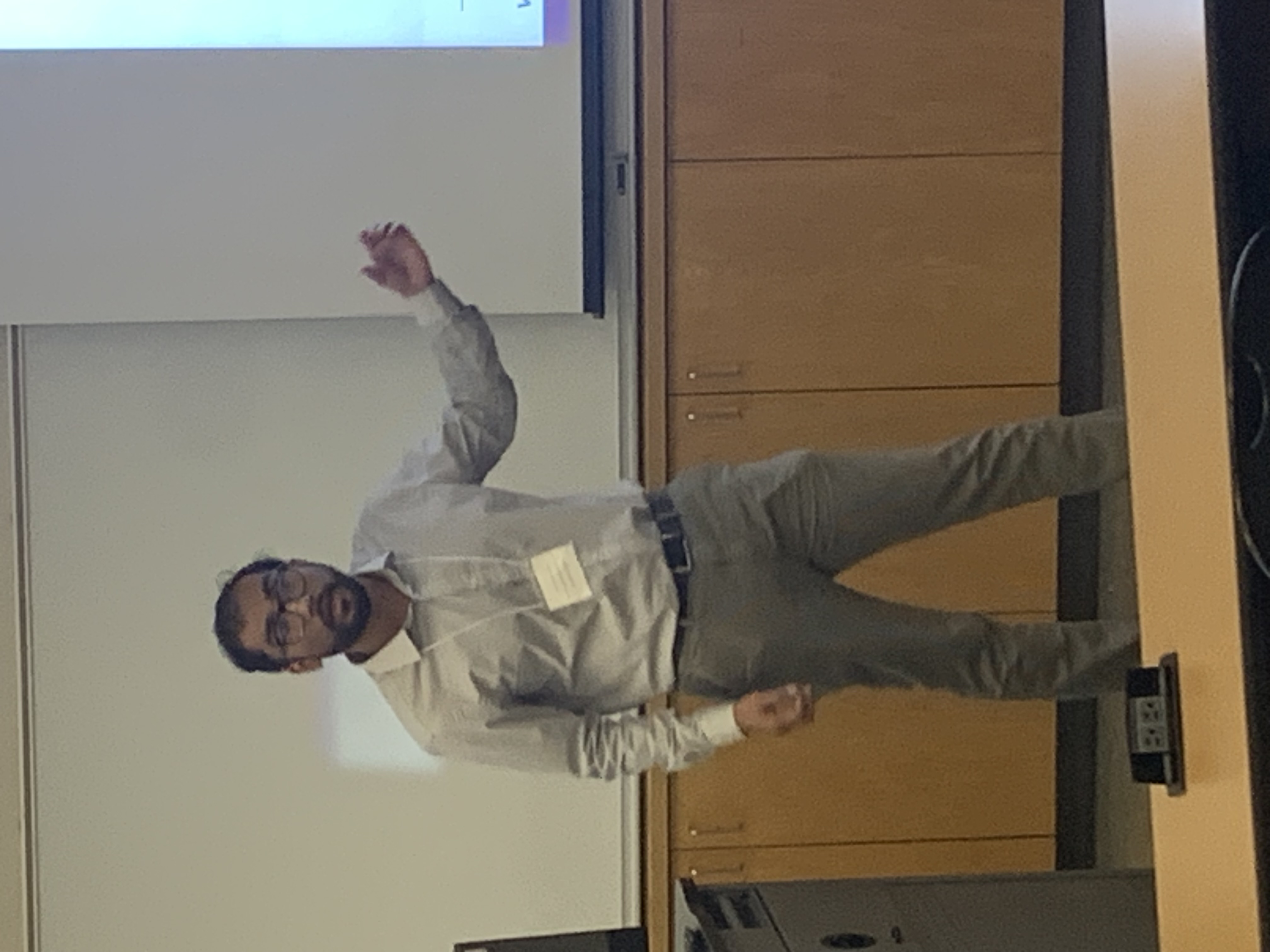
Click here to return to Detailed Schedule
Title: The Gateway Initiative: Math 109E Assessment from Online to In-class
Presenters: Lee Emanuel (F)
Affiliation: Western Kentucky University
Abstract: As a member of the Gateway Initiative in the summer of 2021 several WKU faculty read many articles and considered new teaching strategies to foster greater success in Colonnade courses in Biology, Chemistry, English, History, and Mathematics. Due to the arise of COVID restrictions in 2020 faculty were forced to move their courses to a completely on-line mode. After a few semesters in this form I was astonished at the number of students not even attempting to complete the on-line homework and quizzes. In the Spring of 2022 I switched my assessment to entirely in-class. The students took 27 quizzes in the 28 days we met in class. The results were stunning.
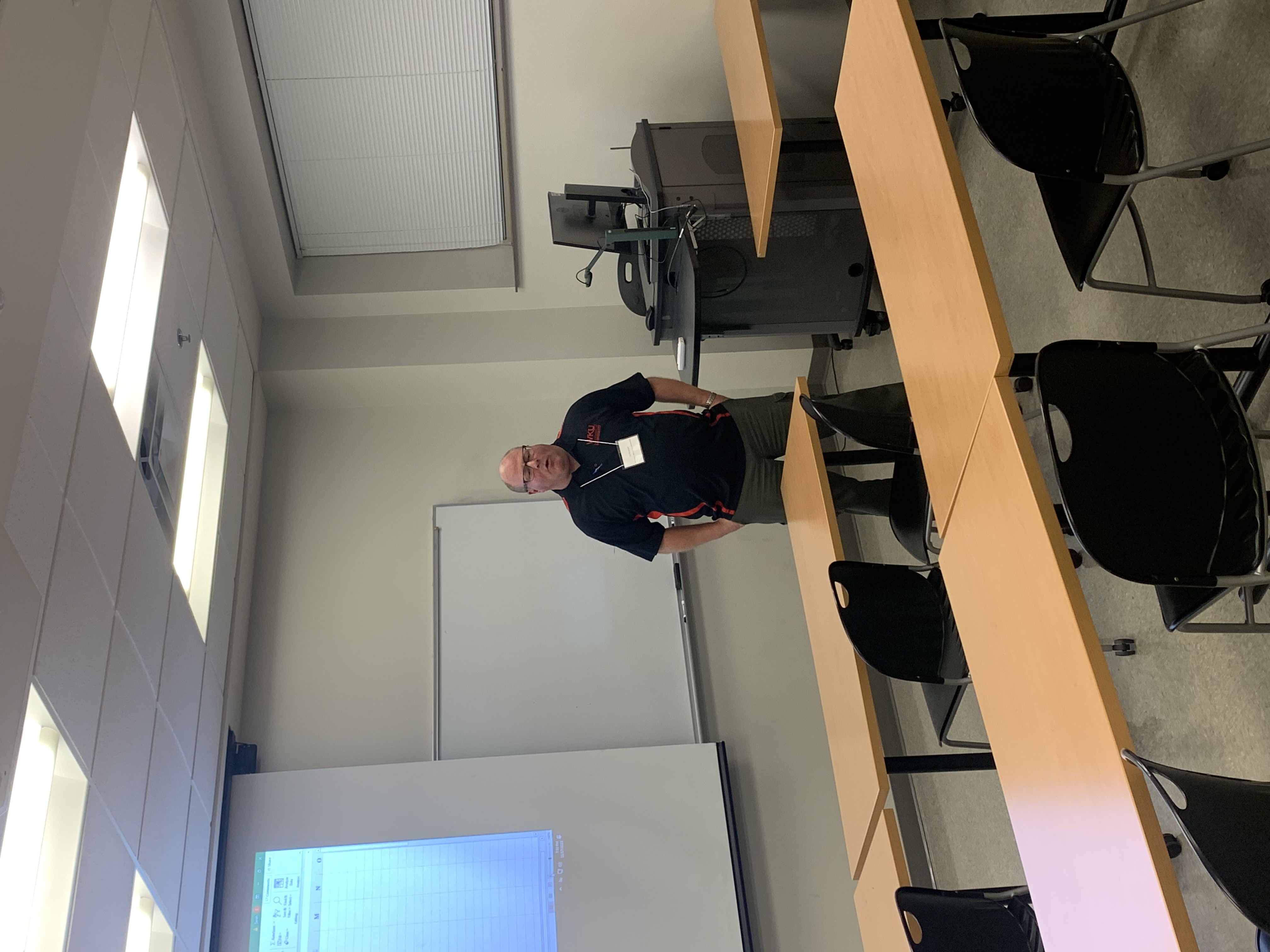
Click here to return to Detailed Schedule
Title: How to Minimize a Dense Set?
Presenters: Lan Nguyen (F)
Affiliation: Western Kentucky University
Abstract: A dense set in a metric space X is a subset of X that is large enough to preserve most properties of X. One important question we can ask is how we can minimize such a set in a way that can be easily constructed. In this talk, we present some interesting examples of how we can formulate dense sets, including the Weierstrass Theorem. Then, we introduce a process to minimize a dense set such that it maintains its characteristics."
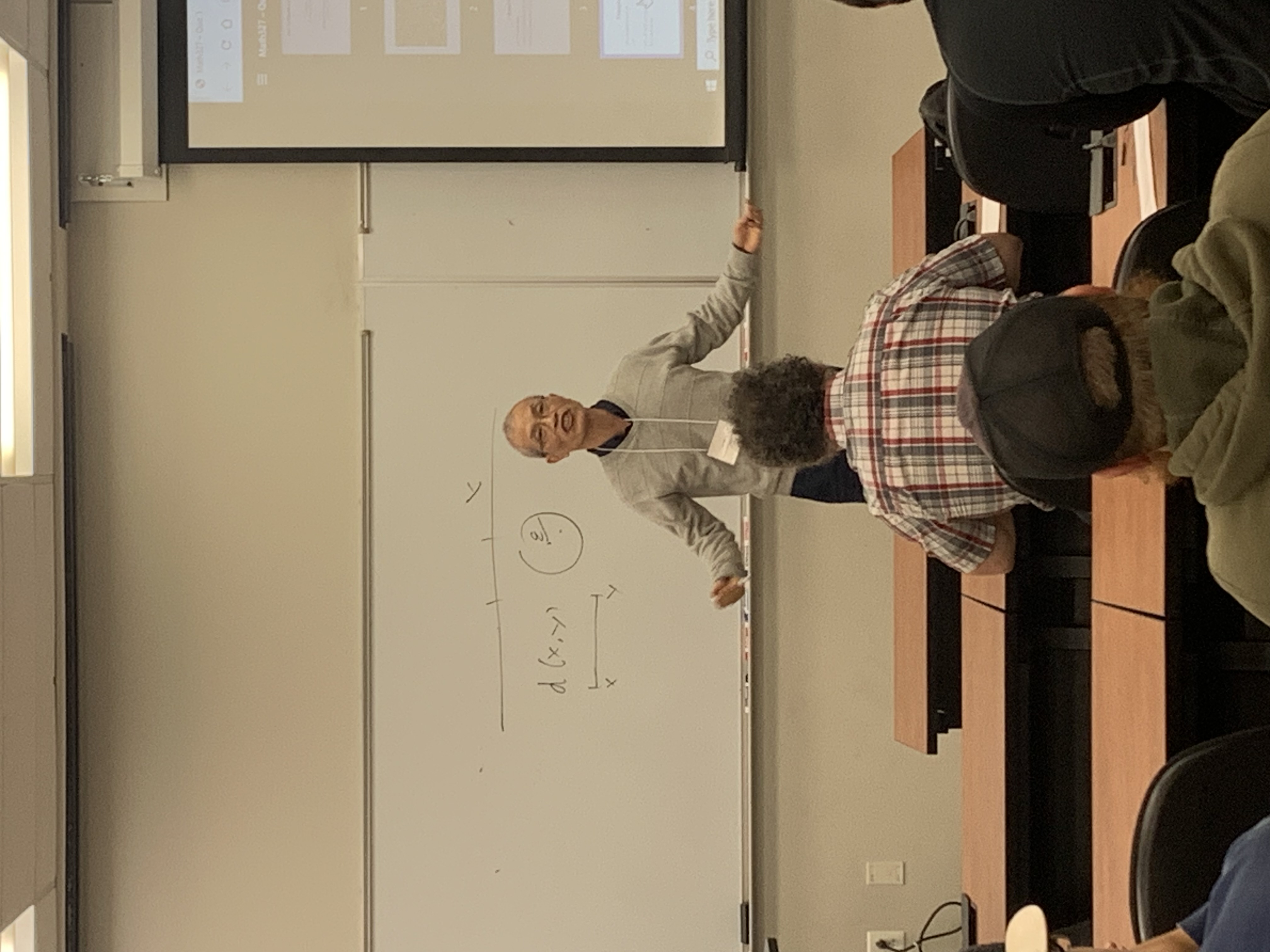
Click here to return to Detailed Schedule
Title: Difference Methods for the Solution of Initial Value Problems in Differential Equations
Presenters: Mark Robinson (F)
Affiliation: Western Kentucky University
Abstract: Numerous applications involve the solution of initial value problems in ordinary differential equations. Many difference methods are useful in the solution of such problems. Several of these methods are considered, including their derivation, implementation, and use in applications.
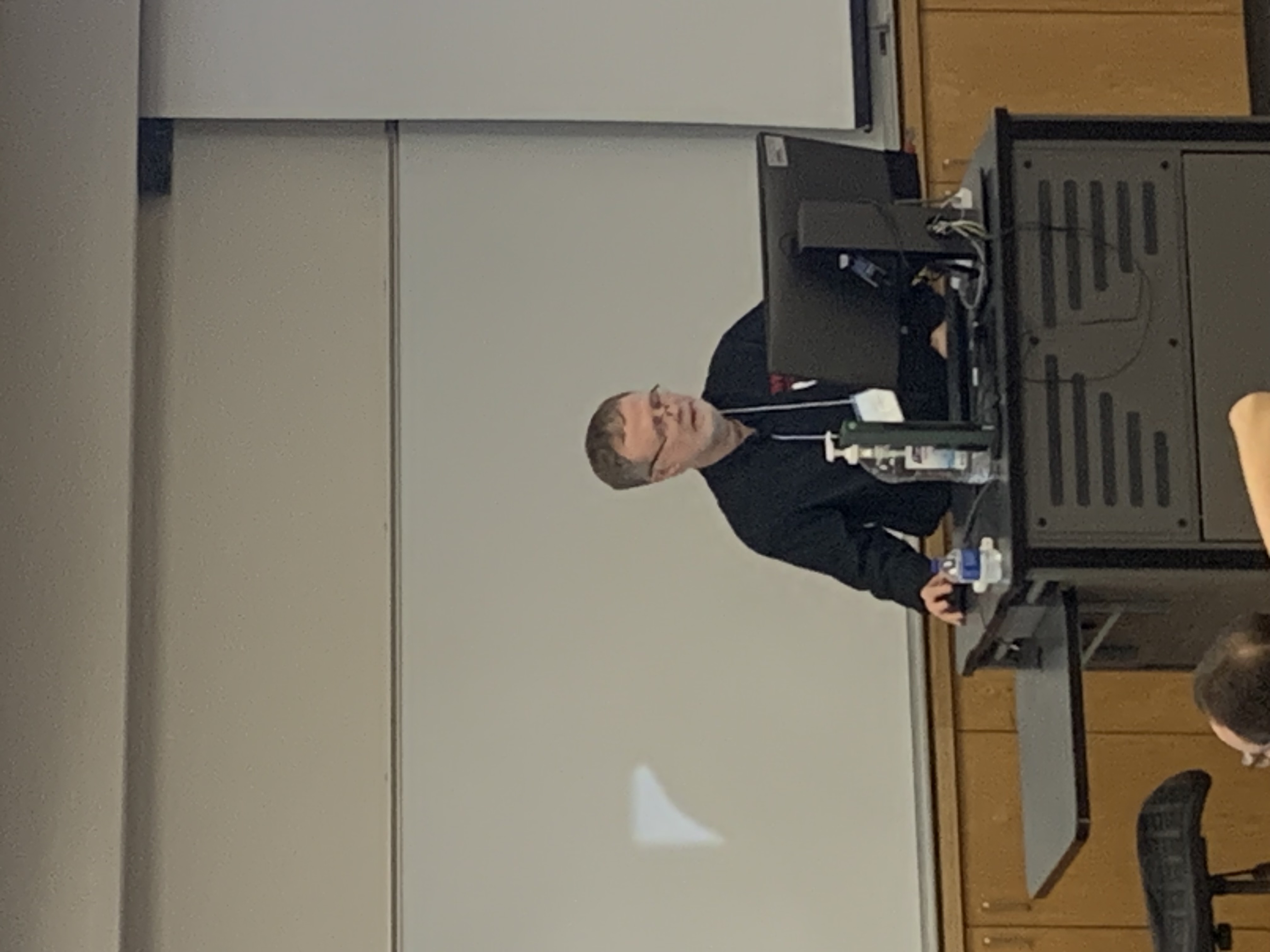
Click here to return to Detailed Schedule
Title: Nonlinear PDE-based Model of Metal Nanocluster Self-Assembly: aAnalysis and Computation
Presenters: Lars Hebenstiel* (G), Mikhail Khenner (F)
Affiliation: Western Kentucky University
Abstract: Bilayer graphene with a top layer rotated with respect to a bottom one typically forms a periodically corrugated surface called a Moire superlattice. This surface presents a complex potential energy landscape for diffusion of deposited atoms or molecules, which can be exploited to assemble nanoclusters with well-defined positions and sizes. We analytically constructed Moire superlattices and corresponding potentials for various values of a twist angle and strain, and followed with a formulation of a nonlinear diffusion equation for adsorbate coverage field rho(x,y,t), accounting for adsorbate-adsorbate interatomic interactions. Then we analytically determined a quasi-2D steady-state nanocluster distributions by solving a model reduced to one spatial dimension. We next computed solutions of a full, 2D nonlinear diffusion problem for the coverage field of several adsorbates in three temperature regimes and determined the kinetics of approaching a steady-state distributions. As the alternative and complimentary approach, we formulated a Langevin equation for diffusion of individual atoms on a Moire and used GPU-accelerated computations to determine the statistics of diffusion for various random initial configurations of atoms. We also determined stable final nanocluster configurations of N atoms using these computations and a graph-theoretical approach.
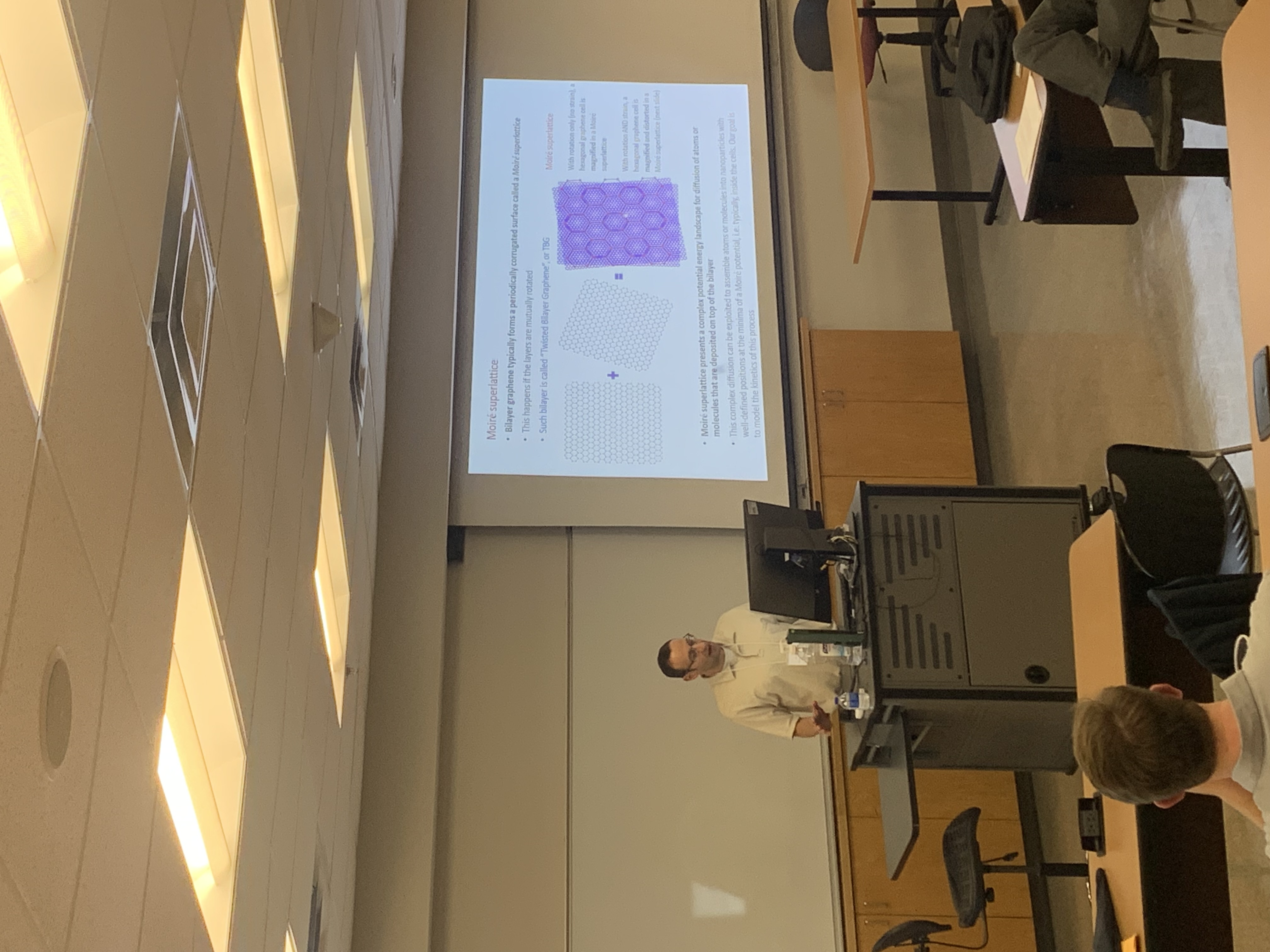
Click here to return to Detailed Schedule
Title: Block by Block: A Comprehensive Approach to Tetris Game Development in MATLAB
Presenters: Gunny Howard* (GA), Suchita Tipirneni* (GA), Jacob Ladwig* (GA)
Affiliation: Western Kentucky University
Abstract: This research presentation is a detailed exploration of the implementation and development of a functional game of Tetris in the MATLAB medium. MATLAB is a programming language and numeric computing environment based on matrices that allow the plotting of functions and data and the creation of user interfaces. These elements are used to recreate the game of Tetris using algorithmic design and graphical representation. The main mathematical concepts and algorithms used in implementing Tetris are matricular manipulation, efficient recurring timer functionality, and color mapping. Additionally, our presentation will detail the coding aspects and challenges presented by the mathematical algorithms and the graphical interfacing. Our project aims to serve as a model that will provide insight into game development methodologies while showcasing the mathematical principles needed to create Tetris in MATLAB.
DID NOT PRESENT
Click here to return to Detailed Schedule
Title: Containment Lattices for Interval Posets of Permutations
Presenters: Asa Ashley* (GA), Tom Richmond (F)
Affiliation: Western Kentucky University
Abstract: Interval posets of permutations register the intervals appearing in permutations according to set inclusion. The interval posets of all permutations for an element size can be ordered by a containment lattice. We study these lattices, focusing on their informational properties, structural representations in higher dimensional space, and symmetries.
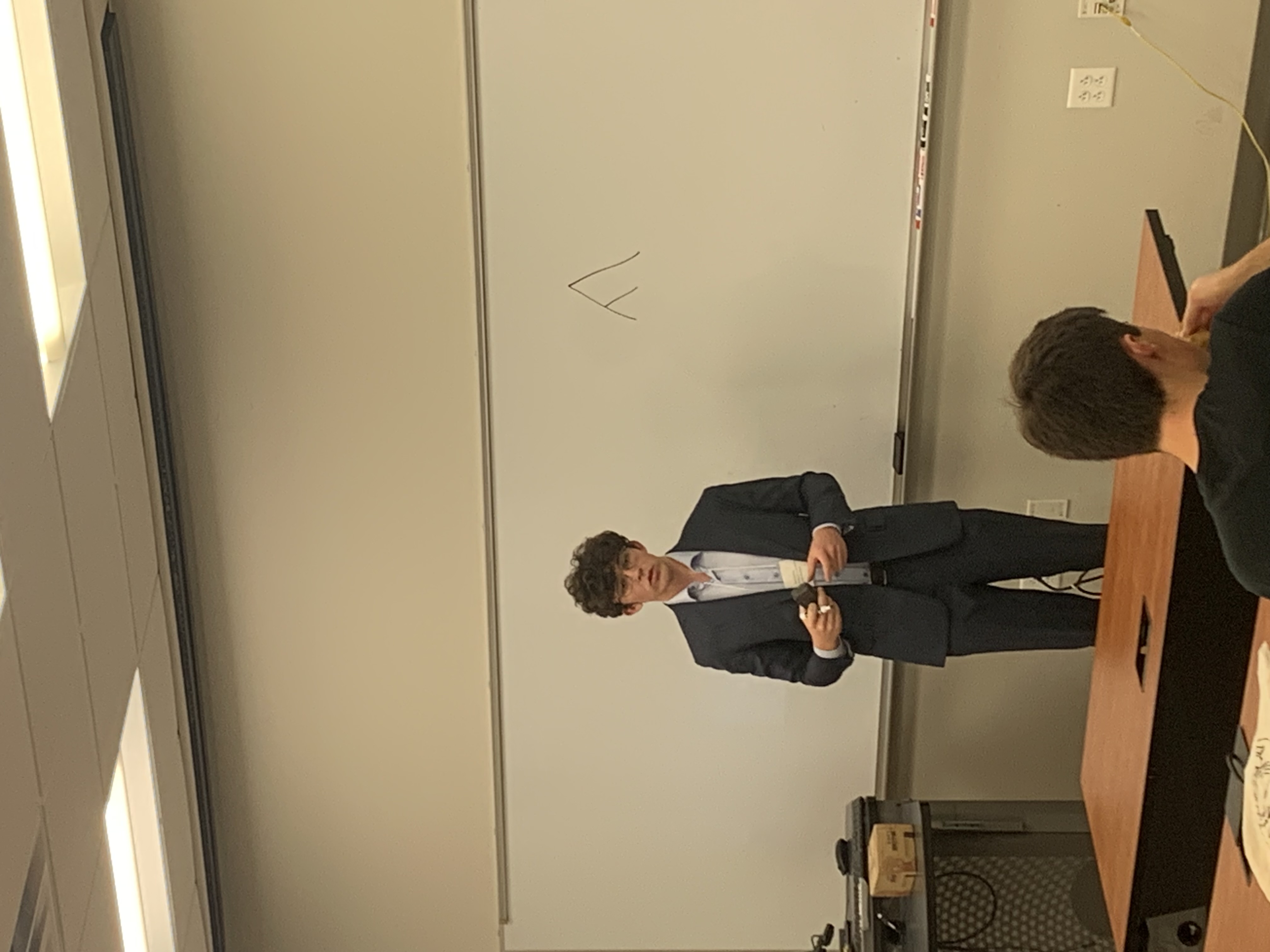
Some of the links on this page may require additional software to view.

